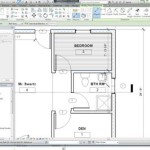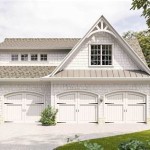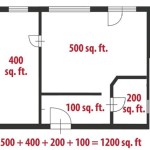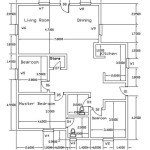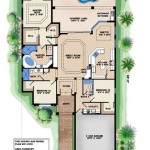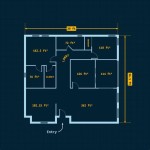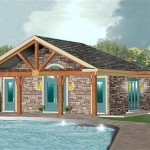A Guide to Simple Ranch House Plans
Ranch house plans offer a timeless appeal, characterized by their single-story layout, open floor plans, and connection to the outdoors. Their simplicity translates to both affordability and adaptability, making them a popular choice for a variety of homeowners. This guide will explore the key features, advantages, and considerations associated with simple ranch house plans.
One of the primary hallmarks of ranch-style homes is their single-story design. This eliminates the need for stairs, improving accessibility and making them suitable for individuals of all ages and mobility levels. The absence of stairs also simplifies construction, often leading to lower building costs compared to multi-story homes.
Open floor plans are another defining characteristic. These layouts typically combine the living, dining, and kitchen areas into a single, large space, promoting a sense of spaciousness and facilitating interaction among family members. This design also allows for flexibility in furniture arrangement and can be easily adapted to changing needs.
Ranch houses frequently feature a strong connection to the outdoors. Large windows, sliding glass doors, and patios or decks are common elements that blur the lines between indoor and outdoor living. This connection to nature enhances the feeling of spaciousness and provides opportunities for relaxation and entertainment.
The simple, rectangular shape of many ranch houses contributes to their cost-effectiveness. This straightforward design minimizes complex roof lines and structural elements, reducing construction time and material expenses. The ease of construction also makes ranch homes a popular choice for DIY enthusiasts.
Adaptability is a significant advantage of ranch house plans. Their straightforward layout allows for easy modifications and expansions. Adding bedrooms, bathrooms, or expanding the living area can be accomplished with relative ease, accommodating growing families or changing lifestyle needs.
Low-pitched roofs are a common feature of ranch-style homes. While this can simplify construction and reduce costs, it also presents some considerations. Low-pitched roofs can be more susceptible to leaks and may require more frequent maintenance compared to steeper roof designs. Proper insulation is also crucial to maintain energy efficiency in climates with extreme temperatures.
While open floor plans offer advantages in terms of spaciousness and social interaction, they can also present challenges for noise control and privacy. Careful consideration of furniture placement and the use of area rugs can help mitigate noise transfer. Strategic placement of walls or partitions can be employed to create defined zones within the open space without sacrificing the overall flow of the layout.
When considering a ranch house plan, it’s essential to assess the available lot size and topography. Ranch homes tend to have a larger footprint compared to multi-story homes with similar square footage. Ensuring the chosen plan fits comfortably within the lot boundaries and complements the surrounding landscape is crucial.
Energy efficiency is a key factor to consider in any home design. While the simple shape of ranch homes can contribute to energy efficiency, proper insulation, window placement, and the use of energy-efficient appliances are essential for minimizing energy consumption and reducing utility costs. Orientation of the home to maximize natural light and minimize solar heat gain should also be considered during the planning stages.
Customization options abound with ranch house plans. Exterior finishes can range from traditional brick and siding to more contemporary materials such as stucco or metal. Roofing materials, window styles, and landscaping choices offer further opportunities to personalize the appearance of the home and reflect individual preferences.
Variations in ranch house designs cater to a wide range of tastes and needs. Suburban ranch homes often feature attached garages and spacious backyards, while smaller, more compact ranch plans are well-suited for urban environments or smaller lots. Split-level ranch designs incorporate a partially lowered level, adding visual interest and creating distinct zones within the home.
Before selecting a ranch house plan, careful consideration of lifestyle needs is essential. The number of bedrooms and bathrooms, the size and layout of the kitchen, and the inclusion of specialized spaces such as a home office or media room should align with the homeowner's current and anticipated future needs.
Consulting with an architect or builder can provide valuable insights during the planning process. They can offer expert advice on site analysis, plan customization, and construction feasibility, ensuring the chosen plan meets both aesthetic and functional requirements.
Exploring various ranch house plan resources can provide inspiration and help homeowners identify their preferred design elements. Online platforms, architectural magazines, and builder showrooms offer a wealth of information and design ideas to guide the selection process.
House Plan Of The Week Simple Ranch With 3 Bedrooms Builder

House Plan Of The Week Simple Ranch With 3 Bedrooms Builder

Classic Ranch House Plan With Breezeway

24x42 Ranch Floor Simple House Plans Open Custom Home

Ranch Style House Plan 3 Beds 2 Baths 1493 Sq Ft 427 4 Houseplans Com

4 Bedroom Classic Ranch House Plan With Covered Porch

Ranch Style House Plan 2 Beds Baths 988 Sq Ft 126 246 Houseplans Com

Affordable Ranch House Plans The Designers

4 Bedroom Ranch Style House Plan With Outdoor Kitchen

The New Guide To Barndominium Floor Plans Houseplans Blog Com
Related Posts


